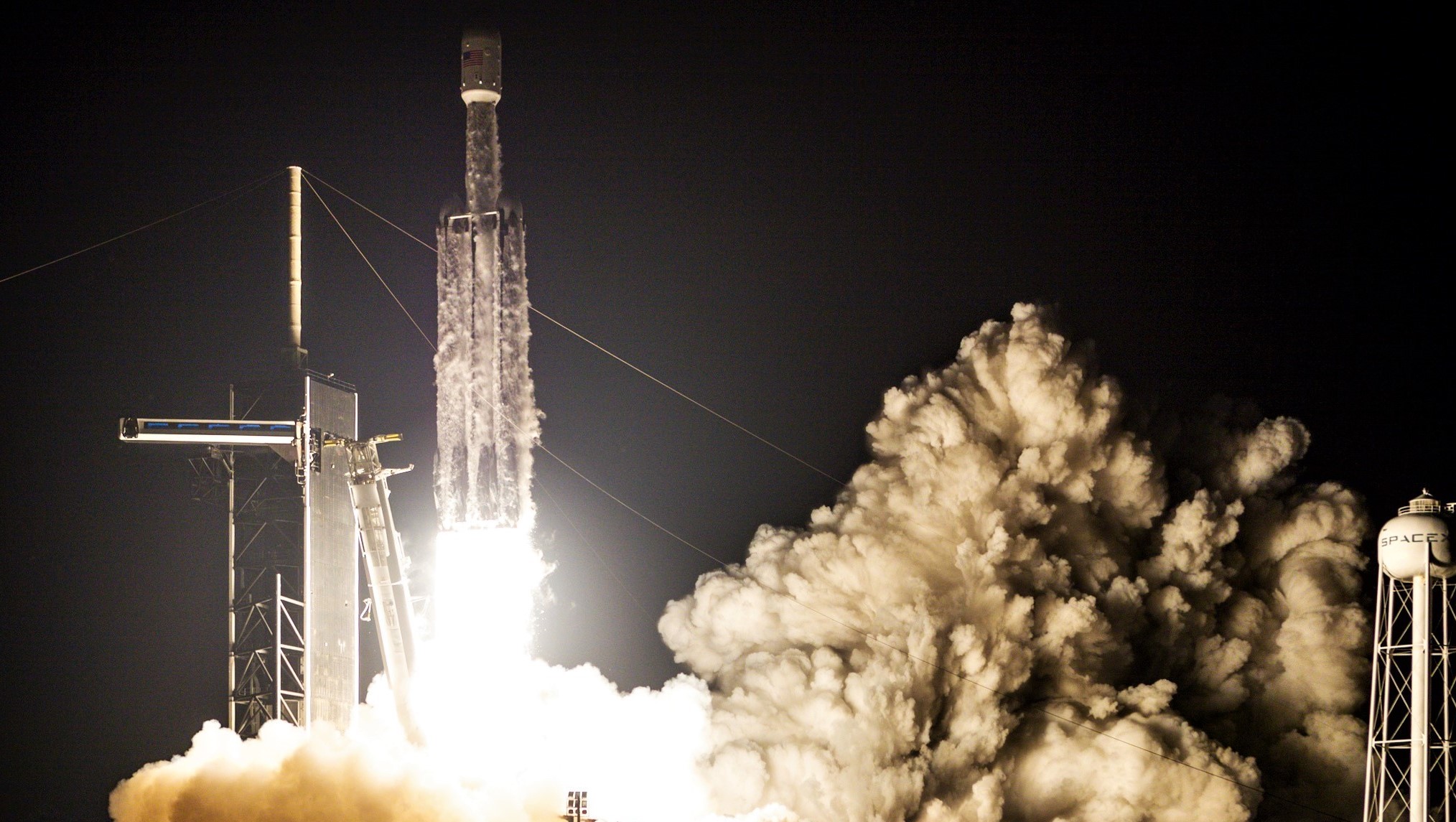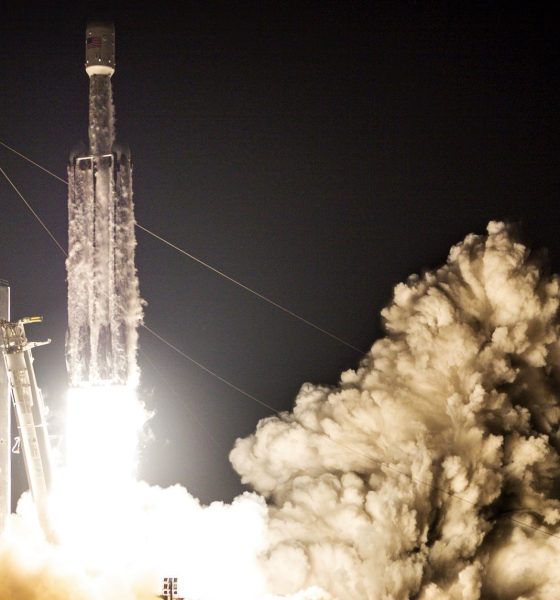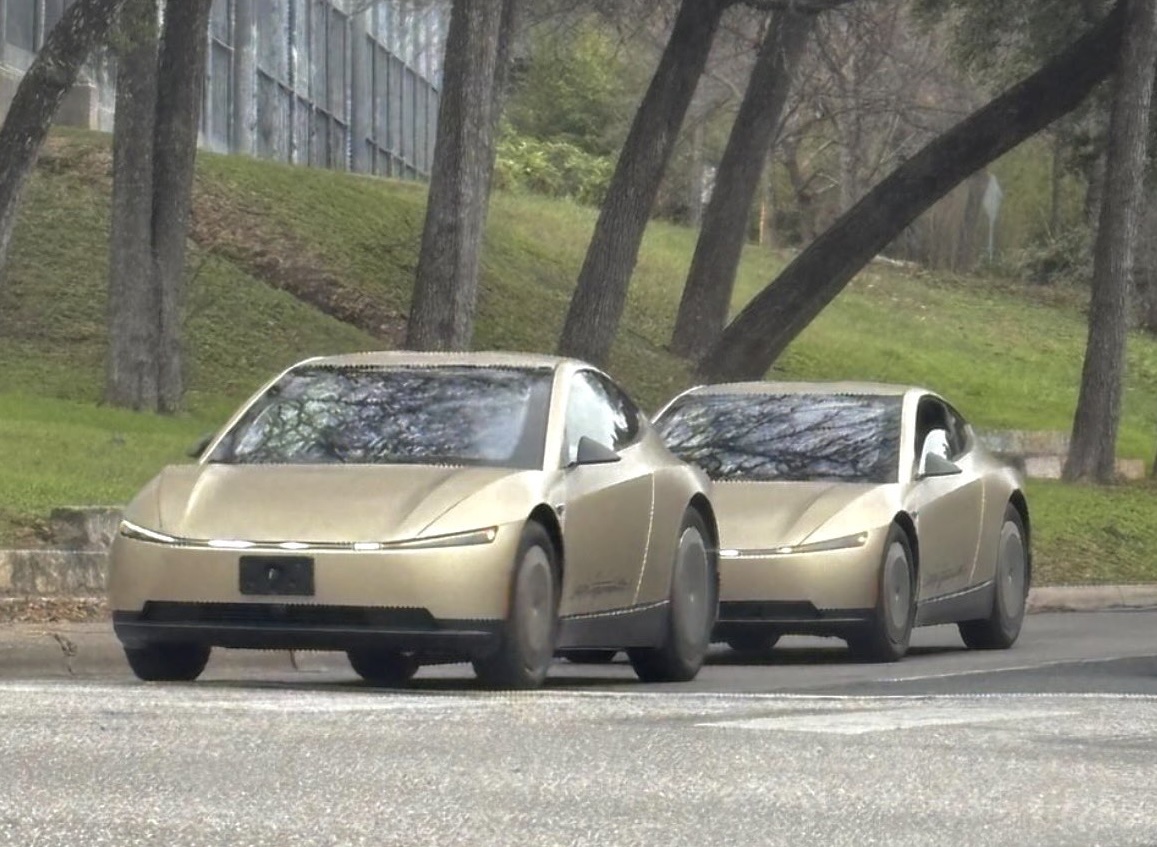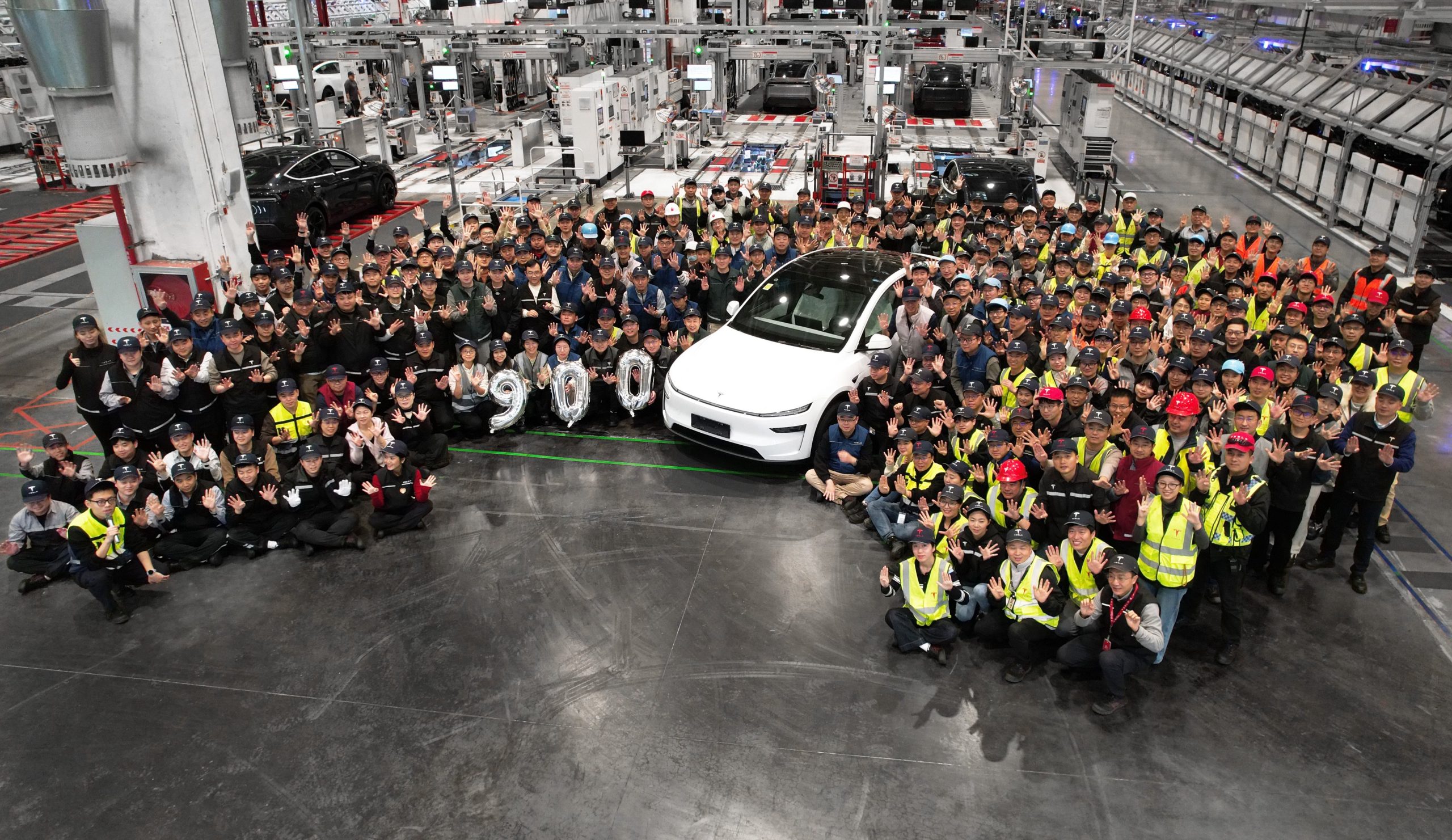

News
SpaceX CEO Elon Musk explains why Falcon Heavy’s center core missed the drone ship
Some 12 hours after Falcon Heavy successfully completed what Elon Musk described as the SpaceX’s “most difficult launch ever”, the CEO took to Twitter to offer some insight into the mission’s only sad note – an unsuccessful center core recovery attempt.
The second Falcon Heavy Block 5 center core built by SpaceX, B1057 suffered an untimely demise shortly after its first (and last) launch, failing to successfully land aboard drone ship Of Course I Still Love You (OCISLY). Although an undeniable disappointment, the overall STP-2 mission was a spectacular success and will without a doubt serve SpaceX well as the company eyes its first certified Falcon Heavy launches for the US military. New center cores can and will be produced and there should be no doubt that SpaceX will eventually perfect center core recovery (or transcend the need entirely with Starship).
As noted by both CEO Elon Musk and several SpaceX engineers-turned-webcast-hosts, aside from the fact that the overall mission was by far the company’s most challenging yet, center core B1057’s recovery was also expected to be the most challenging booster landing ever. The booster’s landing target was drone ship OCISLY, stationed a record-smashing 1240 km (770 mi) off the coast of Florida – almost 30% further than any previous recovery attempt.
Sadly, SpaceX either chose not to broadcast the center core’s onboard camera during reentry or the booster could not maintain a downlink connection during the ordeal. However, based on basic info that was included in the webcast, B1057 completed its boost burn and separated from the upper stage and Space Test Program-2 (STP-2) payload some 3 minutes and 40 seconds after lifting off from Pad 39A. At MECO (main-engine cutoff), the building-sized booster was traveling a blistering 3.1 km/s (Mach 9) at an altitude of more than 120 km (75 mi).

Running on slim propellant margins, the booster coasted through vacuum almost the entire way to drone ship OCISLY. Around 9 minutes after launch, B1057 began its entry burn, likely igniting three Merlin 1D engines to effectively cushion it against the worst of atmospheric reentry heating. Unintuitively, much of the actual benefit of that burn derives from that cushioning effect, while the burn only slows the booster down by a few hundred meters per second (mph).
Effectively falling in near-vacuum conditions, pulled by gravity, B1057 could easily have been traveling 3.5-4 km/s (Mach 10-12) by the time Earth’s atmosphere began to slow it down. Described by Musk himself, back-of-the-envelope analysis of available telemetry apparently indicated that that spectacularly fast and hot reentry either burned through B1057’s heavy titanium heat shield or broke through the smaller heat shield surrounding its M1D engine bells.
In short, the brutal heating and buffeting of hypersonic atmospheric reentry damaged the rocket’s central M1D engine, necessary for an accurately controlled drone ship landing. Incredibly, B1057 actually appeared to make it almost all the way to a successful recovery, veering off course just a few hundred meters above OCISLY. Musk also noted that this may have actually been an instance of the rocket’s autonomous guidance computer intentionally abort a landing attempt to protect the drone ship. It’s possible that the reentry didn’t fully destroy components, but rather damaged them to the point that they failed only after a sustained landing burn.

Regardless, the end result is unambiguous. Falcon Heavy center core B1057 did its job perfectly, supporting the STP-2 launch, boosting the upper stage and payload almost half the way to orbit, and eventually sacrificing itself to avoid potentially damaging OCISLY. SpaceX’s next Falcon Heavy launch is currently scheduled to launch the very large AFSPC-52 military satellite no earlier than September 2020, a full 15 months away. The company should have no trouble manufacturing multiple new center cores between now and then.
Check out Teslarati’s Marketplace! We offer Tesla accessories, including for the Tesla Cybertruck and Tesla Model 3.

News
Tesla shares epic 2025 recap video, confirms start of Cybercab production
The cinematic montage, posted by the official Tesla account on X, celebrated the company’s progress in EVs, energy, and Robotaxi development.

Tesla has released an epic year-in-review video for 2025, recapping some of its major achievements from refreshed models to autonomy breakthroughs and production ramps.
The cinematic montage, posted by the official Tesla account on X, celebrated the company’s progress in EVs, energy, and Robotaxi development while looking ahead to an even bigger 2026.
Tesla’s 2025 highlights recap
Tesla has had a busy 2025, as highlighted in the recap video. The video opened with Elon Musk explaining the company’s pursuit of sustainable abundance. A number of milestones were then highlighted, such as the rollout of FSD v14, Optimus’ numerous demos, the opening of the Tesla Diner in Hollywood, LA, the completion of the world’s first autonomous car delivery, and the launch of the Robotaxi network in Austin and the San Francisco Bay Area.
Tesla also highlighted several of its accomplishments over the year. As per the company, the Model Y was the year’s best-selling vehicle globally again, and Teslas became more affordable than ever thanks to the Model 3 and Model Y Standard. Other key models were also rolled out, such as the refreshed Model S and X, as well as the new Model Y, the new Model Y Performance, and the six-seat, extended wheelbase Model Y L.
The Megablock was also unveiled during the year, and the Supercharger Network grew by 18%. Over 1 million Powerwalls were also installed during the year, and the Cybertruck became the first EV truck to get both an IIHS Top Safety Pick+ award and an NHTSA 5-Star safety rating.
Cybercab production confirmed
Interestingly enough, Tesla also confirmed in its 2025 recap video that the production of the Cybercab has started. This bodes well for the vehicle, as it could result in the vehicle really being mass-produced in the first half of 2026. Elon Musk confirmed during the 2025 Annual Shareholder Meeting that Cybercab production should earnestly start around April 2026.
Musk has also noted that the Cybercab will be Tesla’s highest-volume vehicle yet, with the company aiming for an annual production rate of about 2 million units. “If you’ve seen the design of the Cybercab line, it doesn’t look like a normal car manufacturing line,” Musk said earlier this year. “It looks like a really high-speed consumer electronics line. In fact, the line will move so fast that actually people can’t even get close to it.”
News
Tesla Cybercab is changing the look of Austin’s roads, and it’s not even in production yet
Videos and photos showed the sleek, two-seat autonomous vehicles navigating traffic.

Even before entering production, Tesla’s Cybercab is already transforming the appearance of Austin’s streets, with multiple prototypes spotted testing in downtown areas recently.
Videos and photos showed the sleek, two-seat autonomous vehicles navigating traffic. Interestingly enough, the vehicles were equipped with temporary steering wheels and human safety drivers.
Recent Cybercab sightings
Over the weekend, enthusiasts captured footage of two Cybercabs driving together in central Austin, their futuristic silhouettes standing out amid regular traffic. While the vehicles featured temporary steering wheels and side mirrors for now, they retained their futuristic, production-intent exterior design.
Industry watcher Sawyer Merritt shared one of the vehicles’ videos, noting the increasing frequency of the autonomous two-seater’s sightings.
Previewing the autonomous future
Sightings of the Cybercab have been ramping in several key areas across the United States in recent weeks. Sightings include units at Apple’s Visitor Center in California, the Fremont factory test track, and in Austin’s streets.
The increased activity suggests that Tesla is in overdrive, validating the autonomous two-seater ahead of its planned volume production. Elon Musk confirmed at the 2025 Shareholder Meeting that manufacturing begins around April 2026 with ambitious targets, and during an All-Hands meeting earlier this year, Musk hinted that ultimately, Tesla’s factories should be able to produce one Cybercab every 10 seconds.
News
Tesla celebrates 9 million vehicles produced globally
The achievement, announced by Tesla Asia on X, celebrated not just the Shanghai team’s output but the company’s cumulative production across all its factories worldwide.

Tesla has achieved a new milestone, rolling out its nine millionth vehicle worldwide from Giga Shanghai.
The achievement, announced by Tesla Asia on X, celebrated not just the Shanghai team’s output but the company’s cumulative production across all its factories worldwide. The milestone came as 2025 drew to a close, and it inspired praise from some of the company’s key executives.
Tesla’s 9 million vehicle milestone
The commemorative photo from Tesla Asia featured the Giga Shanghai team assembled on the factory floor, surrounding the milestone Model Y unit, which looked pristine in white. The image was captioned: “Our 9 millionth vehicle globally has just rolled off the production line at Giga Shanghai. Thanks to our owners and supporters around the world.”
Senior Vice President of Automotive Tom Zhu praised Tesla’s factory teams for the remarkable milestone. He also shared his gratitude to Tesla owners for their support. “Congrats to all Tesla factories for this amazing milestone! Thanks to our owners for your continued support!” Zhu wrote in a post on X.
Giga Shanghai’s legacy
Tesla’s nine million vehicle milestone is especially impressive considering that just 207 days ago, the company announced that it had built its eight millionth car globally. The eight millionth Tesla, a red Model Y, was built in Giga Berlin. The fact that Tesla was able to build a million cars in less than seven months is quite an accomplishment.
Giga Shanghai, Tesla’s largest factory by volume, has been instrumental to the company’s overall operations, having reached four million cumulative vehicles earlier in 2025. The plant produces Model 3 and Model Y for both domestic Chinese and export markets, making it the company’s primary vehicle export hub.








